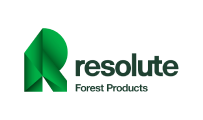Procter & Gamble (P&G), one of the world’s largest consumer goods companies, is taking significant steps to improve the transparency of its forest product sourcing. This comes amid growing investor pressure and a broader push for sustainable supply chains. Understanding these moves is essential for Canadian sustainability professionals seeking to strengthen their expertise through ESG training.
Why Forest Sourcing Matters in ESG
Forest products, especially wood pulp, are essential components in consumer goods like tissues, paper towels, and diapers. However, unsustainable sourcing can contribute to deforestation, biodiversity loss, and climate change—issues that are central to the ESG (Environmental, Social, and Governance) agenda.
For P&G, ensuring responsible forest sourcing is not just about compliance. It aligns with investor expectations, global sustainability commitments, and reputational risk management.
P&G’s Commitment to Greater Transparency
In response to investor advocacy led by groups like the New York State Common Retirement Fund, P&G agreed in December 2024 to enhance its transparency regarding wood pulp sourcing. Specifically, the company will publicly disclose more detailed findings from third-party audits of its wood pulp suppliers.
P&G’s new disclosures will include:
-
The scope and methodology of supplier audits.
-
Any gaps or non-conformances identified during audits.
-
Corrective actions taken by suppliers to address issues.
This development followed a shareholder proposal urging P&G to strengthen sustainability in its sourcing practices, especially in the face of concerns about deforestation and supply chain impacts.
Key Insights for Canadian ESG Professionals
P&G’s move carries important lessons for sustainability professionals in Canada:
-
Material ESG Issues in Supply Chains: Forest sourcing is a highly material topic for sectors like consumer goods, retail, and paper manufacturing. Professionals must understand how to identify and manage material risks across supply chains.
-
Stakeholder Pressure: This case demonstrates how investor activism can influence corporate sustainability policies. Tools like the PRI’s Active Ownership 2.0 framework guide investors on engaging companies for ESG improvements (Learn more here).
-
Auditing and Transparency: Knowing how to evaluate supplier audits, sustainability certifications (like FSC—Forest Stewardship Council), and corrective action plans is an essential skill in ESG reporting.
ESG Training: Building Competence in Supply Chain Sustainability
Canadian professionals looking to advance their careers in sustainability can benefit significantly from specialized ESG education. The Certified Sustainability (ESG) Practitioner Program by CSE provides participants with practical skills in:
-
Supply chain sustainability and ESG risk assessment.
-
Stakeholder engagement and effective communication.
-
Navigating global standards like GRI (Global Reporting Initiative) and SASB (Sustainability Accounting Standards Board).
-
Implementing audit and assurance frameworks for supply chains.
Discover more about the program here:
👉 Canada Sustainability ESG Program – Next Cohort
A Global Trend: Forest Sourcing Under Regulatory Spotlight
P&G’s enhanced transparency is part of a broader global shift. For example, the EU Deforestation Regulation (EUDR), which came into force in June 2023, mandates companies trading with the EU to ensure their commodities are not linked to deforestation. Learn more from the European Commission here:
Canadian companies with global operations will increasingly need to align with such regulations to maintain market access and investor confidence.
Final Thoughts
Procter & Gamble’s steps to improve forest sourcing transparency underline the importance of supply chain sustainability in ESG strategy. For Canadian ESG professionals, staying updated on these corporate shifts is vital. More importantly, advancing through comprehensive ESG training will equip professionals to help their organizations lead in transparency, compliance, and sustainability leadership.







